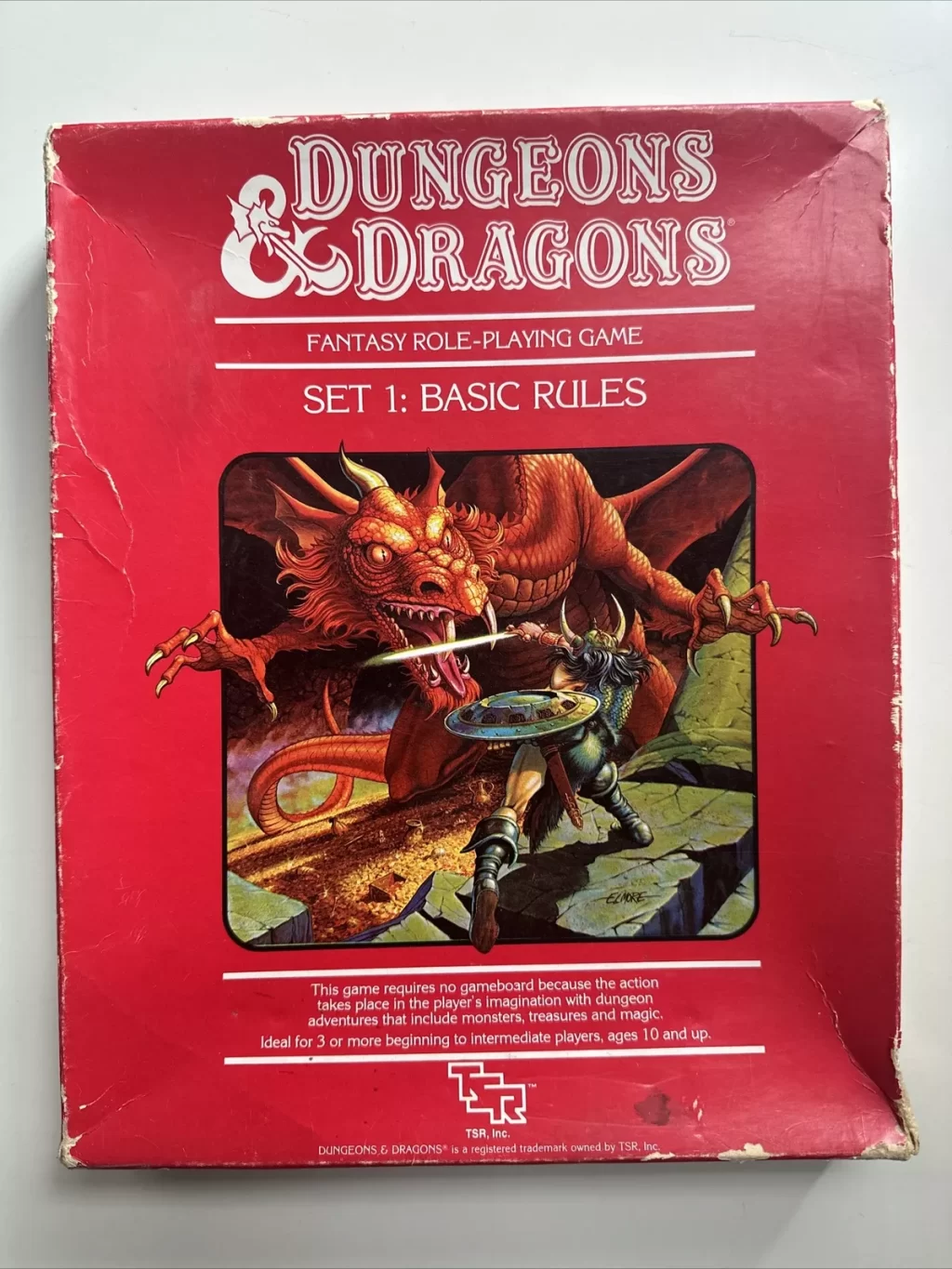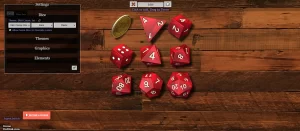
In the annals of tabletop role-playing games, few products have left as lasting an impact as the 1983 "Red Box" Dungeons & Dragons Basic Rules Set. Designed by Frank Mentzer and published by TSR, this set introduced countless players to the magical world of D&D. With its striking cover art by Larry Elmore, depicting a dragon and a valiant warrior, the Red Box became the quintessential entry point into fantasy role-playing. This set marked a key moment in D&D's history, as it was tailored to be an accessible gateway for newcomers. More than just a rulebook, it served as a guide for creating and experiencing epic adventures within one's imagination.
The Red Box contained two booklets: the Player's Manual and the Dungeon Master's Rulebook, along with a set of dice, including the iconic 20-sided die that is central to D&D mechanics. The art and layout of the box were thoughtfully designed to engage new players, providing both thematic flavor and a clear guide to the game's complexities. The Player's Manual took a step-by-step approach to teaching the basics of character creation, combat, spells, and adventuring concepts. It also featured an introductory solo adventure, a unique addition that allowed players to explore the rules and experience a small dungeon crawl on their own, without the need for a Dungeon Master. This solo play experience was pivotal, igniting interest and laying the groundwork for more complex group adventures.
On the other hand, the Dungeon Master's Rulebook catered to those running the game. It provided an introduction to creating adventures, managing encounters, treasures, and monsters, along with advice for storytelling and keeping the game engaging. The booklet included stat blocks for various monsters, magic items, and guidelines for leveling up characters through level 3, creating a solid foundation for expanding adventures. Together, these booklets formed an essential toolkit for new players and DMs alike, facilitating a smooth transition into the world of D&D.
What set the Red Box apart was its accessibility. Before its release, Dungeons & Dragons had garnered a reputation for being somewhat complex and daunting for new players. The Red Box dismantled these barriers by providing clear, step-by-step instructions that transformed the learning curve into a fun, user-friendly experience. Its simplicity and straightforwardness established it as the gold standard for introducing newcomers to the game. Another highlight of the Red Box was the solo adventure in the Player's Manual. This innovative feature allowed players to experience the game firsthand, guiding them through character creation, making choices, and resolving conflicts using dice rolls - all without the need for a group or experienced Dungeon Master. This interactive introduction showcased the core excitement of D&D: storytelling, character growth, and the thrill of combat.
The presentation played a crucial role in the Red Box's success. Larry Elmore's iconic cover art captured the essence of D&D's adventurous spirit, while the illustrations throughout the manuals brought the fantasy world to life. The layout was straightforward, with clear headings and boxed text, making the rules digestible even for younger or less experienced players. Furthermore, the rule set allowed players to develop their characters up to level 3, providing just enough of a glimpse into the character's growth and the vastness of the D&D universe to make players eager for more, often leading them to explore the more advanced Expert Set and other modules.
The Red Box was based on earlier Basic D&D rules by Gary Gygax and Dave Arneson but was refined by Frank Mentzer to create a polished, beginner-friendly experience. The set supported four basic classes - Fighter, Magic-User, Cleric, and Thief - as well as the Dwarf, Elf, and Halfling races, which functioned as classes. This class-race combination was a hallmark of early D&D editions, simplifying character options while providing diverse play styles. Combat and task resolution revolved around rolling a 20-sided die, a mechanic that made the basics of gameplay easy to grasp. The magic and spell rules were straightforward, with each class having a limited number of spells per day, which added a strategic layer to spellcasting and encouraged careful use of magical abilities.
Experience points (XP) and leveling up were fundamental to the Red Box's mechanics. It provided clear guidelines for awarding XP for defeating monsters and finding treasure, allowing characters to advance to level 3. This taste of progression laid the groundwork for understanding character development, making players hungry for further exploration of their character's potential in subsequent adventures.
The 1983 Red Box is often credited with bringing Dungeons & Dragons into the mainstream. Its approach to teaching the game opened the door for younger players and those with no prior experience, transforming D&D into a cultural touchstone. The box could be found on the shelves of toy stores, bookshops, and hobby shops, introducing fantasy role-playing to a wider audience. Its influence continues to resonate in modern RPG design, including the current editions of D&D. The focus on accessibility, guided learning, and solo play options has been echoed in later starter sets, such as the 2014 D&D Starter Set and the more recent Essentials Kit, which are spiritual successors to the Red Box, continuing its tradition of providing an accessible gateway into tabletop role-playing.
The 1983 Red Box Basic Set was more than just a rulebook; it was a revolution in how tabletop role-playing games could be introduced and played. By packaging a comprehensive yet straightforward set of rules, character options, and adventures, it captured the imaginations of a generation, laying the foundation for D&D's enduring success. Its legacy lives on, not just in nostalgic memories, but in the structure and presentation of D&D materials today. For many, the Red Box was the first step into worlds of magic, danger, and limitless possibility - a cherished classic that remains a turning point in the history of role-playing games.






